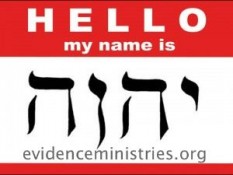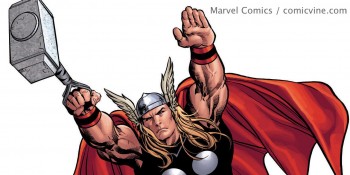Trademarks are obnoxious but necessary. If I slapped some set of ingredients together to make a dark cola drink, called it a Pepsi, and tried to sell it to passersby at a train station, PepsiCo Inc. could sue me for infringing their brand. I would be doing them wrong on two counts: profiting from their popular name, and duping people who tried my (presumably) inferior product into thinking that the “real” Pepsi soft drink tasted differently than it does.
Obviously, Pepsi isn’t a word you’re going to use in a different context. We don’t go “pepsi-ing” or vacation in the “Pepsis.” But let’s take a moment and think about some other brands that are used as everyday words: Crush and Sprite (to stick with sodas). Gap. Crest. Blockbuster. Ivory. Tide. Visa. Apple. Windows. Mars. Champion. Mustang. Not to mention brand names that have become the common words for their products: Kleenex. Lego. Xerox.
Brand identity is also important in the gaming industry. You almost certainly know at least three people who play or have played Candy Crush Saga, or you are one yourself. It’s one of the most popular mobile app games at present, and it rakes in about $1 million a day from in-app purchases. Candy Crush Saga is very closely based on the game Bejeweled, which was made over a decade prior. It’s about matching three similar objects in a row to clear them from the board. The player advances through levels until he or she run out of “lives,” at which point the player either has to wait around for more or buy them with real money.
King.com, Ltd., the game’s developer, has a number of other games in its roster that end in the word “Saga” — Pet Rescue Saga, Farm Heroes Saga, and Bubble Witch Saga, to name a few. However, if you put the word “Saga” into the search bar for Amazon app games, you’re going to get 613 results, including Jewels Crush Saga (advertising itself as the “#1 Puzzle game on the world”), Fruit Crush Saga, and Candy Rescue in Farm (by Candy Crush Game), none of which are made by King. I wouldn’t dream of accusing these games of trying to leech off of Candy Crush’s commercial success rather than succeeding on their own merits, but I won’t stop you from coming to your own conclusions about it.
Product confusion is a strategy hardly unique to video games. I’m sure you’ve all seen movies, either in video stores (what?) or on Netflix, which are either: a) cheap knock-offs of recent blockbusters and children’s movies with similar-sounding names, or b) documentaries of some sort for which you really have to squint to read the bit about it being a documentary. They come out when the popular film is still in theaters and are mostly purchased unwittingly as gifts for relatives.
So what’s the problem? Why shouldn’t King trademark its intellectual property and protect it from poachers? Well, maybe because of this.
Stoic, an independent game producer, recently released a game, called The Banner Saga, about leading a tribe of Vikings through the wastes to find a new homeland. It’s a tactical strategy and leadership simulation game, where the player makes hard choices about how to spend resources in order to keep the game people alive amid the dangers around them. I haven’t played it yet, but it looks awesome.
King is pushing the trademark office to prevent Stoic from registering the name “The Banner Saga” because they claim people might be confused about whether or not it’s a King game. Essentially, because it uses the word “Saga” in the title.
If Stoic can’t get a trademark on the name, then anybody else will be able to put out a game with the same title and pass it off as their own, causing actual confusion. And that will happen, because people will hear about the game, see the legitimate version costs 25 bucks, and then look in the app store and see what looks like the same game only costing a dollar or two.
Here’s the kicker. The word “Saga” means “a long story.” In Old Norse. You know, Viking language.
Aside from that, though, it’s a common word that should be accessible to any serious creator of content. This kind of focused effort to trademark the word comes off as a serious power grab of the worst sort. If a company can own the word “Saga” as it pertains to video games, why can’t I own the word “a,” as it pertains to … uh … writing, say? After all, the word “a” appears in the title of my article, which you’re reading right now! (Of course, if I did manage to pull off something like that, it would make cataloging easier. You would never again mistakenly look under “A” for A Separate Peace: just flip right to “S”!)
Permit me to take this idea to its logical conclusion and posit a dystopian future where every individual word in the English language can be trademarked because it is part of one brand or another. In this world, major corporations use all of the positive, upbeat, happy words they associate with their products, leaving only the depressing, the morose, and the morbid and grotesque for common usage.
All of art (not borne of commercial materials) becomes dark and forlorn, offspring of Poe and Sylvia Plath. Mankind pays out of pocket for positive thinking and emotional stability, directly from vending machines that spout little cards with the words “Hope” and “Laughter” on them. (Eventually, these vending machines are banned in schools due to high caloric content.)
Advertisers become new gods, able to wrap the masses around their fingers with inspiring words (wait a second…), while subversives make up a new, ever-evolving lexicon, like a password language, going obsolete every few months as the corporations trademark their leavings.
OK, maybe that’s not too likely, but who knows? What are your thoughts?
Better to get them all down now before somebody can sue you for copyright infringement.



